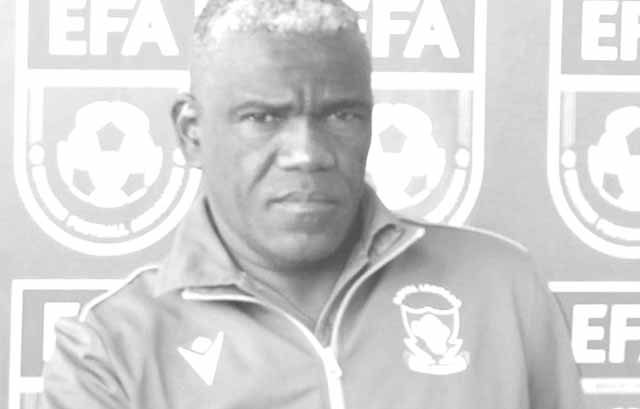By Samkelo Mahlalela | 2018-05-17

Since the discovery of minerals in South Africa in the 1860s, Swaziland has been a labour-exporting partner for South African mining companies with most miners coming from the Lubombo region.
It is not surprising that the recent news of the billon rand settlement of the silicosis and TB class action released on May 3 has dominated the community news pages in the local print media these last couple of days.
The details of the historic settlement resulting from three years of extensive negotiations involving: Richard Spoor Inc; Abrahams Kiewitz Inc and the Legal Resources Centre – representing claimants in the silicosis and tuberculosis class litigation – and the Occupational Lung Diseases Working Group – representing African Rainbow Minerals, Anglo American SA; AngloGold Ashanti, Gold Fields; Harmony; Sibanye-Stillwater and Pan African Resources, are of interest to those whose relatives have worked in the mines in South Africa or are currently engaged there. The Agreement provides meaningful compensation to all eligible workers suffering from silicosis and/or tuberculosis, who worked in these companies’ mines from 12 March, 1965 to date. This is the very first class-action settlement of its kind in Southern Africa. There are 10 classes of claimants who, once properly certified, will be eligible for a benefit.These include: silicosis class 1 – 4 which vary from the early stage of silicosis to defined special aggravated medical condition; dependants of deceased eligible silicosis claimants who died between March 1965 and the effective date; first degree, second degree and “historical” tuberculosis; and dependents of a deceased tuberculosis claimant.
The news has certainly got many talking as well as whet many greedy appetites. Many just want to have a piece of whatever money that may be due to their relatives – living or deceased. As a result, some of the ex-miners that were no longer cared for properly, will receive an upgrade - get improved care and meals for the first time, and in some cases, be let back into their wives’ beds - all because they will likely become ‘rich’. Light hearted as the last part may sound, this is the reality faced by many ex-miners after having acquired tuberculosis and/or silicosis - which many of the old guard still prefer to call “Ithayizeze”. Many found themselves locked out of the houses that they built with their pure sweat, owing to lack of knowledge on silicosis, stigma and discrimination. But what concern is this for the HIV response in Eswatini?
The HIV situation among eswatini
miners and
their partners
In the 2010 report,“Migration-induced HIV and AIDS in rural Mozambique and Swaziland” which examined the vulnerability to HIV and AIDS of rural partners of migrant miners, it was found that a quarter of the Swazi respondents identified HIV as the leading cause of death of miners and ex-miners. Others cited occupational injury (22 per cent) and tuberculosis (19 per cent) and other diseases (19 per cent). AIDS also stood out as the leading perceived cause of death of community members in general (31 per cent), followed by tuberculosis (20 per cent), and other diseases (21 per cent).
The report findings were further corroborated by a paper published by Corno and de Walque which examined whether participation in mining in a bordering country affects HIV infection rates in Swaziland and Lesotho. Using the relevant Standard Demographic and Health Surveys (DHS) conducted 2006-2007 looking at miners and their partners, the overall findings indicated that migrant miners (20 per cent) and their partners (43 per cent) are more likely to be HIV infected.
The 2010 report indicated that both miners and female rural partners were at risk through their behaviour and perceptions of personal vulnerability and were found to be high. For the miners, high risk behaviour is a consequence of the migrant labour system which sees them spend the greater part of time away from home in an all-male environment of macho masculinity with easy access to transactional sex. Many are aware that condom use reduces their risk of contracting HIV but some still use them sporadically.
On return home, condoms are used even lesser or not at all. A reported nearly 80 per cent of miners perceived themselves at low risk or no risk at all of HIV and only 15 per cent thought they were at high risk. In stark contrast however, their partners were much more pessimistic about their risk of infection, with over half (51 per cent) saying they were at high risk and only eight per cent citing no risk at all.
The women’s sense of vulnerability comes from the perceived behaviour of their partners, not their own – nearly half (48 per cent) said their migrant partners were not faithful and/or did not want to use condoms. Therefore, when the miners are eventually laid off for occupational health related problems like TB or silicosis, the wives who view them to be the source of illness in the family, often treat them as outcasts. Whether because of ignorance or pure revenge, those with tuberculosis and/or silicosis are isolated and do not enjoy conjugal rights. At times, the ex-miners are not visibly sick and obviously attract new partners, and a repeat of the cycle of little or no condom use with the new partner ensues– fertile ground for new HIV transmissions.
The Hlatikhulu Occupational Health Services Clinic
In 2014 a mapping study undertaken from March to April by USAID in collaboration with the Swaziland Miners Association and the National Tuberculosis Control Programme (NTCP) focused on current and ex-miners within the Nkwene community in the Shiselweni Region, indicated that the prevalence of TB in miners was higher than the general population and needed to be urgently addressed.
As a result, a second mapping study was funded by the World Bank (December 2014) and mapped mineworkers and ex-mineworkers across four Southern African countries (South Africa, Mozambique, Swaziland and Lesotho).
The main objective of the second study was to generate accurate, detailed, and up-to-date information on the demographic characteristics of current and ex-mineworkers and the availability of TB screening and treatment facilities. The key informants perceived TB prevalence amongst miners to be higher compared to the general population - this compounded by that the high HIV prevalence amongst miners and ex-miners predisposes them to TB. For most ex-miners, poverty makes it rather difficult for patients to travel to clinics or health facilities to access treatment.
Then there is the complicated situation of silicosis among the returning miners and ex-miners. In Swaziland, silicosis is most likely to be misdiagnosed as TB, owing to the unavailability of relevant diagnostic tools and lack of adequately trained staff to diagnose silicosis.
This has resulted in silicosis being under diagnosed or in some cases, misdiagnosed as MDR-TB. Misdiagnosis is often due to a lack of diagnostic tools, few facilities that offer silicosis screening, with only about three occupational health doctors in the country that can confidently diagnose the disease.
The establishment of the occupational health services centres (OHSC) has provided some sort of relief to the prevailing situation of miners, ex-miners and their families.
One such, is based in Hlatikhulu and provides a comprehensive or holistic and high quality coordinated response to tuberculosis (TB), HIV and AIDS, silicosis and other occupational diseases and injuries in mineworkers and ex–miners, their families including extended families, and the larger communities where the miners or ex-miners reside. At present, the OHSC provides a range of services at a single point to improved care, including prevention and to access compensation for the occupational lung diseases. It aims to contribute towards the reduction of the TB burden in the Mining Sector in the Southern African countries by providing for occupational medical assessments of current and ex-mineworkers (especially for occupational lung disease) and ensure access to compensation and social security, where due.
The OHSC provides services that meet the minimum service package to mineworkers, ex-mineworkers, their families including extended families and the larger communities where these reside.
These services are aligned to National Policies and good practice and in that they embrace Prevention Activities; TB screening including chest X-ray and active case finding; HIV/AIDS counselling and testing services; Comprehensive history testing, including occupational history; Provision of benefit medical examination or equivalent services to miners and ex-miner workers; Provision of basic occupational medical examination to certain identified groups of miners (such as Artinasal or small-scale miners) where such service is not available – site and context specific; Claims completion and referral services for eligible compensation cases – both to worker compensation authorities and if available, other social security services; Community outreach, awareness and mobilisation activities to key populations; Referral of all diagnosed diseases; and Social counselling to the current miners, ex-miners and their families as per need - this includes money or/and assets management.
As the scramble for compensation ensues, let us remember that indeed, every dark cloud has a silver lining, and though the labour induced migration from rural Swaziland to South Africa’s gold mines has brought with it many unwanted by-products, it has also provided an opportunity for the miners, ex-miners, their families and communities to access health services. The hope is that many of our ex and current miners benefit from the financial redress.
share story
Post Your Comments Below

His Majesty King Maswati III has thanked Emaswati for their support, love and the gift of peace. ...

Soccer- Royal Leopard head coach Edwin Matsebula says if they drop points in their MTN Premier Le...
All material © Swazi Observer. Material may not be published or reproduced in any form without prior written permission.
Design by Real Image Internet